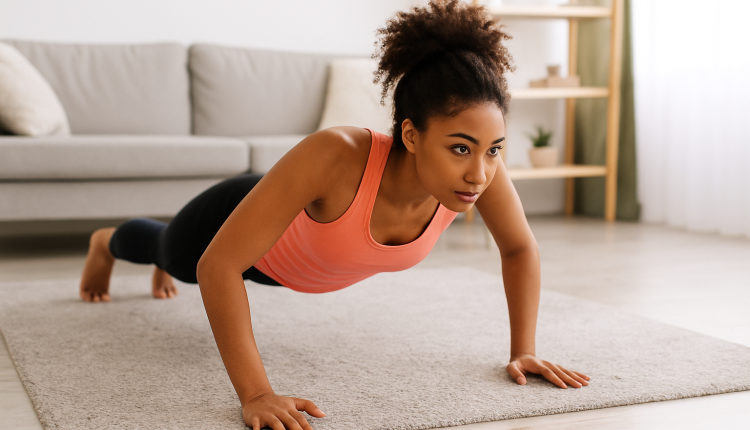Modern life often leaves little space for traditional exercise routines. Between work, commuting, family, and social responsibilities, many people struggle to dedicate an hour to the gym or a structured workout class. Yet, health experts emphasize that physical activity does not have to be long or complicated to be effective. The concept of micro-workouts—short bursts of exercise lasting just 5 to 7 minutes—offers a practical solution for busy schedules. These mini-sessions can be done at home, at the office, or even during travel, requiring no equipment and minimal preparation.
Why Micro-Workouts Work
Short workouts may seem insignificant, but research shows that even brief physical activity can deliver measurable benefits. A few minutes of elevated heart rate and muscle engagement can improve circulation, boost energy, enhance mood, and contribute to long-term health. Micro-workouts tap into the principle of consistency: small, frequent efforts accumulate to create lasting impact.
Unlike lengthy sessions that often require planning and motivation, micro-workouts eliminate barriers. They are simple, quick, and flexible—perfect for anyone who claims they “don’t have time” to exercise.
Health Benefits of Micro-Workouts
Incorporating short bouts of exercise throughout the day improves cardiovascular function, supports weight management, and enhances focus. For office workers, it combats the negative effects of prolonged sitting, such as stiffness, poor posture, and reduced metabolism.
Psychologically, micro-workouts also play a powerful role. They provide a mental reset, releasing endorphins that reduce stress and sharpen concentration. For people juggling multiple responsibilities, a 5-minute session can feel like a refreshing break rather than a demanding task.
Simple Exercises You Can Do Anywhere
Micro-workouts rely on bodyweight exercises that target multiple muscle groups. These movements are accessible for most fitness levels and can be performed without special clothing or equipment. Examples include:
- Squats – Strengthen the lower body while engaging the core.
- Push-ups – Build upper body and core strength; can be modified on knees or against a desk.
- Lunges – Improve balance, flexibility, and leg strength.
- Plank – Strengthen the core, shoulders, and stability.
- Jumping jacks or high knees – Provide quick cardio boosts to increase heart rate.
These exercises can be combined in different sequences, depending on personal goals. Even two or three movements performed back-to-back can create a full-body workout in just a few minutes.
How to Structure a 5–7 Minute Session
A basic micro-workout might include:
- One minute of squats
- One minute of push-ups
- One minute of lunges (30 seconds each leg)
- One minute plank hold
- One minute of jumping jacks
- Optional cool-down: stretching for one to two minutes
This structure balances strength, cardio, and core training. The intensity can be adjusted by moving faster, holding positions longer, or adding variations.
Fitting Workouts Into Busy Routines
The beauty of micro-workouts lies in their adaptability. They can be inserted seamlessly into daily routines:
- At the office: Do a quick session between meetings or during a coffee break.
- At home: Fit in a workout before showering, while dinner is cooking, or during TV commercials.
- While traveling: Use hotel rooms or outdoor spaces for quick bursts of movement.
Consistency matters more than perfection. Even if one session seems too short, repeating it throughout the day multiplies the benefits.
Overcoming Common Excuses
Many people dismiss short workouts, believing they are not enough to make a difference. However, science shows otherwise. Multiple studies confirm that brief, high-quality efforts can rival longer workouts when practiced consistently. The key is intensity and regularity, not duration alone.
For those who worry about space or privacy, micro-workouts are discreet and adaptable. Most exercises can be done quietly in small areas without drawing attention or requiring special clothing.
The Mental Shift: Redefining Fitness
Adopting micro-workouts requires a shift in mindset. Fitness should not be viewed as an all-or-nothing pursuit. Instead, it can be integrated into daily life in small, manageable portions. By redefining what “counts” as exercise, people can move away from guilt over skipped gym sessions and embrace a more flexible, sustainable approach.
Conclusion: Small Steps, Lasting Impact
Micro-workouts prove that fitness does not require hours at the gym or elaborate routines. With just 5–7 minutes, anyone can boost energy, improve health, and build strength. The secret lies in consistency, creativity, and willingness to seize small moments throughout the day.
In a world where time is scarce, micro-workouts transform exercise from a daunting task into an accessible habit—making health achievable for even the busiest lives.


